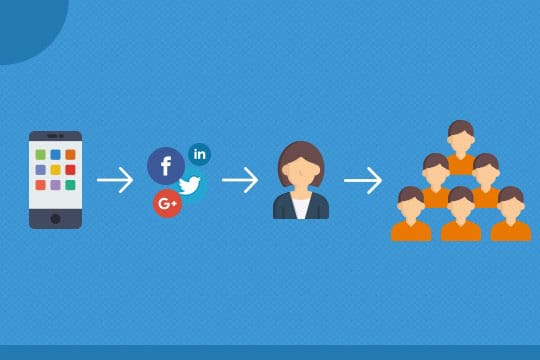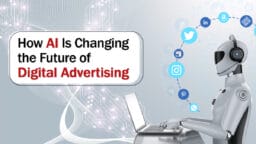Business-to-business (B2B) content marketing is not as daunting as it seems. There are many ways that one can leverage their resources to get the content that they need in front of their prospects.
In this article, we examine the different trends that are apparent in B2B content marketing these days and will continue to remain a part of the industry in the years to come.
From the utilization of automation technology to the apparent use of engaging content to feed consumer interest, we’ve got you covered. Whether you’re starting a blog or have a current business intact, this article can help.
1. Utilize Interactive Media Such as AR and VR

Content has undoubtedly gone a long way from traditional articles with limited distribution through print media. As media and technology converge even more now and towards the future, the likelihood of forming new concepts when it comes to interactive media is exciting indeed.
For now, augmented reality (AR) and virtual reality (VR) are leading the way in promoting new media types that marketers can harness when creating and leveraging new content.
The reason interactive content such as these types of work is due to the fact that it can engage with your prospective audience. A lot of people might assume that only the business-to-customer (B2C) base is interested in technology and content such as this, but you may be surprised at the usage in B2B.
B2B buyers, such as those engaged in technology, are more adept at harnessing content types such as these. This is because they are at the forefront of their craft. Even simple ways to adapt to these technologies, such as using a mobile device’s gyroscope to shape how one views ads, can form the engagement that one needs.
Recommended for you: Should You Include a Product Comparison Charts on Your Site?
2. Create Channel-Oriented Types of Content

Just because the digital marketplace can be separated from the physical one due to tangibility does not mean that it can be generalized. The internet presents a number of opportunities for you to market your content; you won’t be able to survive just by creating unlimited content for your digital channels.
Each channel demands personalized content designed for that particular channel. Facebook can’t use the material for LinkedIn, and neither can Instagram-centric content be used for Twitter. It is only by understanding these different channels that you can adequately plan your digital content marketing strategy.
For example, if you’re looking to post on Twitter, then limit it to an infographic or something that can be consumed on the fly. LinkedIn demands more professional content, and Facebook is a whole different ballpark.
As much as it is essential to be on the same platform as your potential customers, it only makes to craft content that is suited to the channel as well.
3. Harness the Role of Industry Influencers

When we think of an influencer, we believe the likes of B2C influencers such as celebrities endorsing a particular product or service; but all of this is set to change as time goes by. This is mainly due to the fact that people are now more connected than ever before, and this means even micro-influencers have started to make a difference in the world of B2B.
Here’s why:
A B2B influencer is considered to be a thought or industry leader in whatever sector they are from. Since most of these thought leaders are online and maintain their presence on various platforms, they are easier to track and, as such, those who are connected with them can discover their habits.
This can pose an opportunity for B2B content marketers. They can connect with these influencers and have their products or services given their “stamp of approval.” It makes sense to tap these influencers in order to start making sure that your content gets maximum exposure and that brands are linked with them.
4. Content for Everyone in the Decision-Making Process

B2B marketing is a long process because it usually involves a lot of people. Even decision-making units (DMUs) are made up of different people. It is due to this that it is essential to release content for different people in an organization.
Take for example a technical approach to solving a complicated problem. If you can create content that appeals to the professionals in the process, as well as creates other types of content for those who need the solution but can’t comprehend the jargon, then you’re in.
You need to be able to appeal to everyone in the organization in order for you to get through.
5. Whitepapers and Case Studies Still Work

The reason that these still works are the fact that almost everyone in B2B is looking for real proof that specific solutions work before they can even think of buying from vendors. Also, there is still the notion that someone who is willing to publish a paper and give it out for free is a thought leader in the industry.
By producing whitepapers and case studies, you can prove to customers that you know how to fix different problems that they find occurring in their business. These particular proofs can be used to determine the efficacy of the solution that you are marketing.
This type of content can be given out for free. To this date, it still works at being able to attract customers in purchasing from you.
You may like: 18 Digital Marketing Tips to Enhance Your Niche Audience Targeting.
6. Don’t Forget to Retarget

Just because you can reach a person on one type of medium doesn’t mean that you can’t break the chain. There are so many retargeting strategies that you can use to tap your clients. Facebook even has a retargeting strategy that you can attach to your content marketing needs.
7. Different Types of Content for Different Parts of the Pipeline

B2B content marketing has to take advantage of the fact that there are a lot of stages in a pipeline. By doing this, you can be able to customize content depending on how you want to move a client through that particular pipeline.
Day-by-day, B2B marketing is focusing on the account-based marketing (ABM) approach. It is useful in making sure that people are appropriately targeted. A part of this type of targeting is making sure that content is customized depending on the buyer stage.
Marketers have to realize that each stage of the pipeline requires a different form of content strategy. It slowly convinces a prospect to move forward until they buy from the organization and are ready for remarketing into the pipeline once more.
8. You Should Use Marketing Automation Software

If your organization is still not utilizing the benefits of content management and outreach software, then you’re at a loss. There are plenty of ways that you can be more efficient with your content marketing if it is automated to a certain degree.
Take, for example, where you announce that you have a new blog post on your website. It should automatically be syndicated in all your social networks. It should also be emailed to specific target buyer personas that you have in your pipeline as well. This makes the process easier and more affordable for you and your team to pull off.
Even B2B marketing experts say they spend money on content marketing tools.
9. Cross Guest Posting

With the rise of B2B influencers, expect that guest posting will still be a thing in the years to come. We are all aware of the fact that links to your website are excellent in boosting your search rankings. It tells search engines that people are referring to you. However, getting featured and helping others get featured also helps you at the end of the day. It is goodwill that you could use to market your product.
This type of content posting exchange is nothing new in digital marketing. However, it can be harnessed to great lengths once B2B influencers get thrown into the mix. It allows everyone a share of the pie, and it helps create social proof.
10. Creating Proper Means of Performance Tracking

From Urchin Tracking Modules (UTMs) to tracking email opens, you need to be able to review the performance of all of your campaigns in order for them to be efficient and effective.
Constant A/B or split testing is a requirement to know if your organization is spending money on the right things. Paying attention to your Google Analytics when it comes to cost spending is absolutely vital to ensuring maximum efficient performance.
You should also pay attention to the metrics of your social media campaigns. Because they also help tell you what kind of content works and what doesn’t. Make sure that you are not wasting resources such as time, effort, and money on things that don’t work.
Remember that a campaign is only as good if you can track its performance metrics.
You may also like: How to Boost SEO Results for a Higher Return on Investment (ROI)?
Conclusion

Utilizing any of these strategies will work in helping to supercharge your B2B content marketing campaign. However, it still pays to plan these steps out. It is highly recommended that you utilize a combination of these steps in order to streamline your content marketing process.






